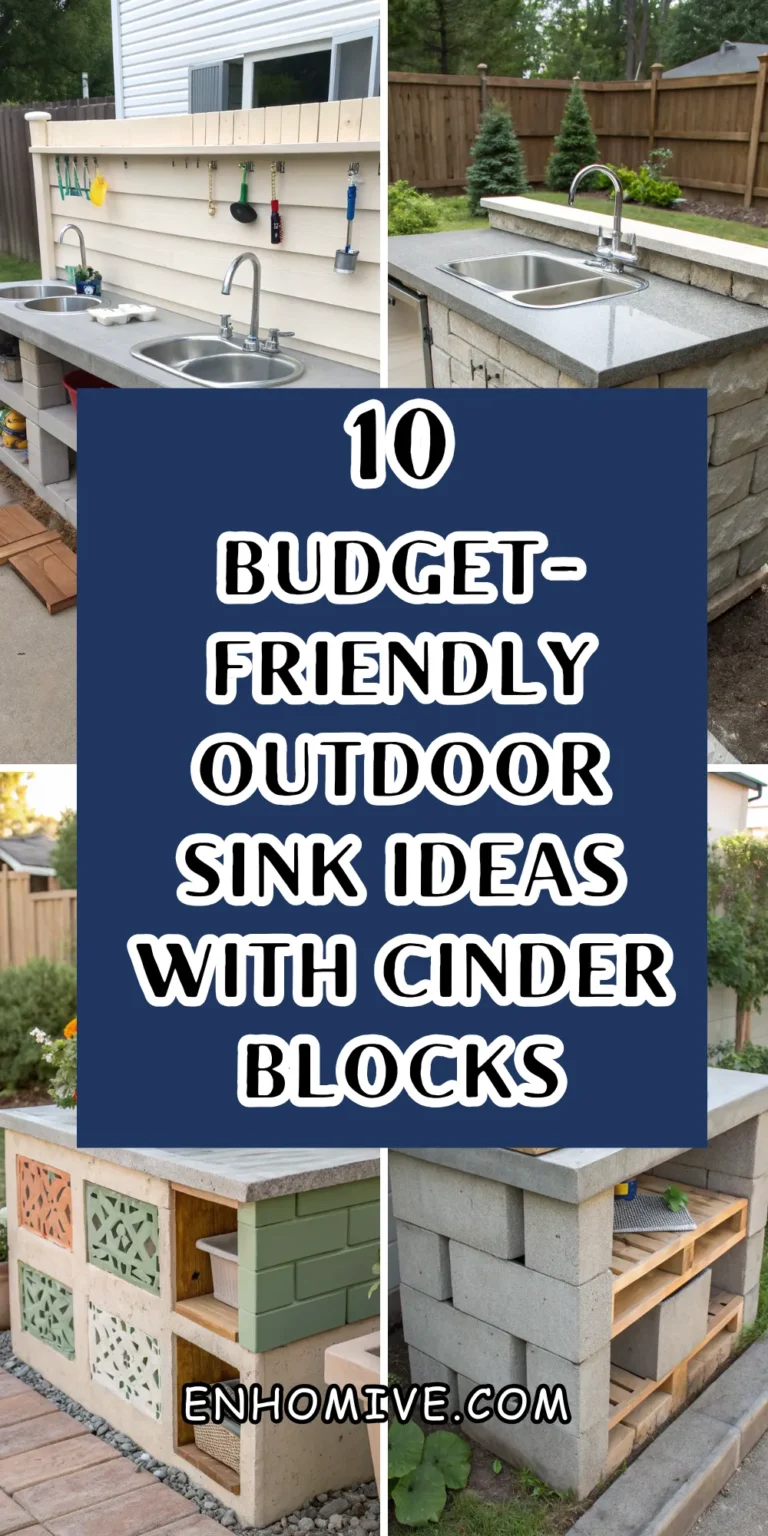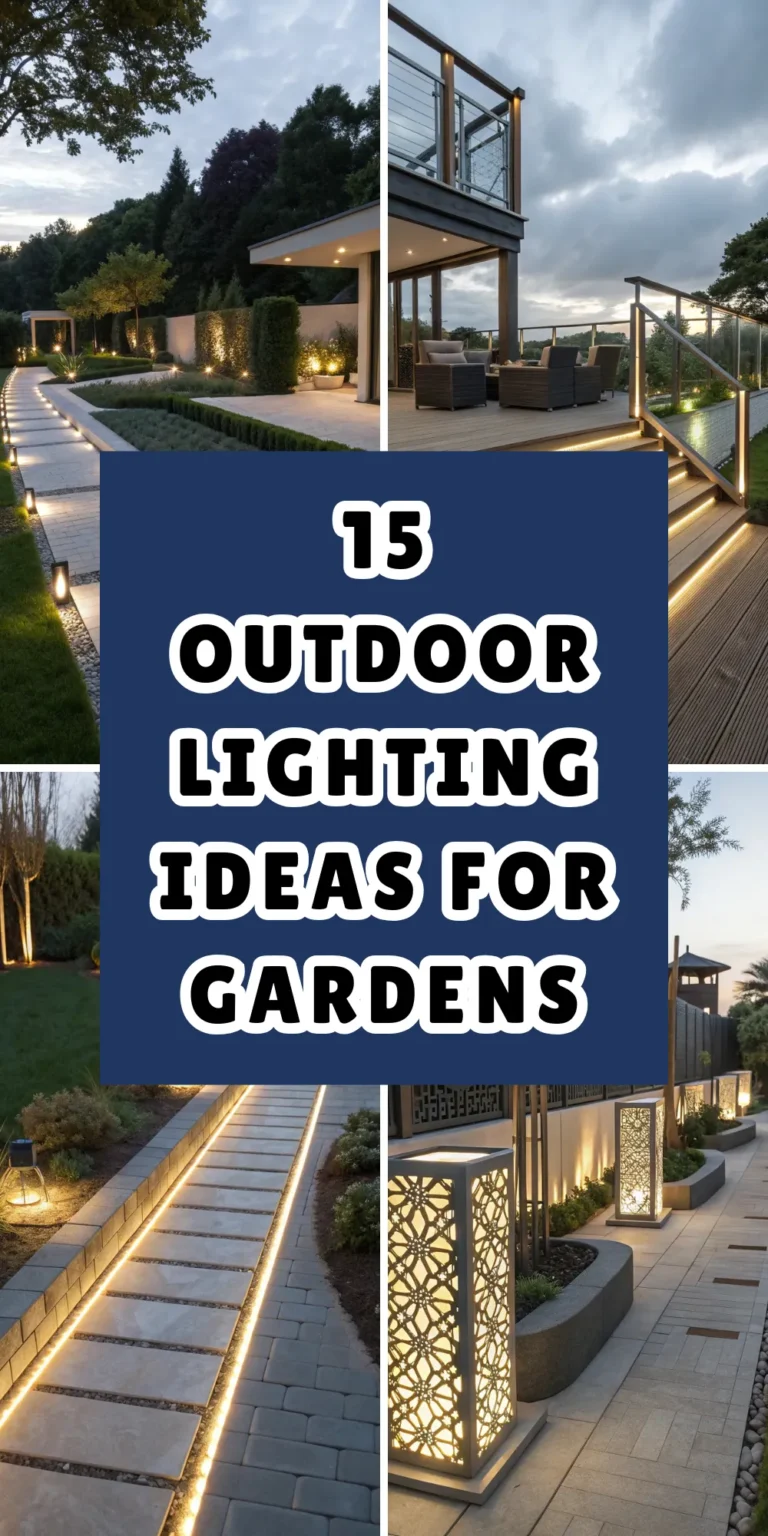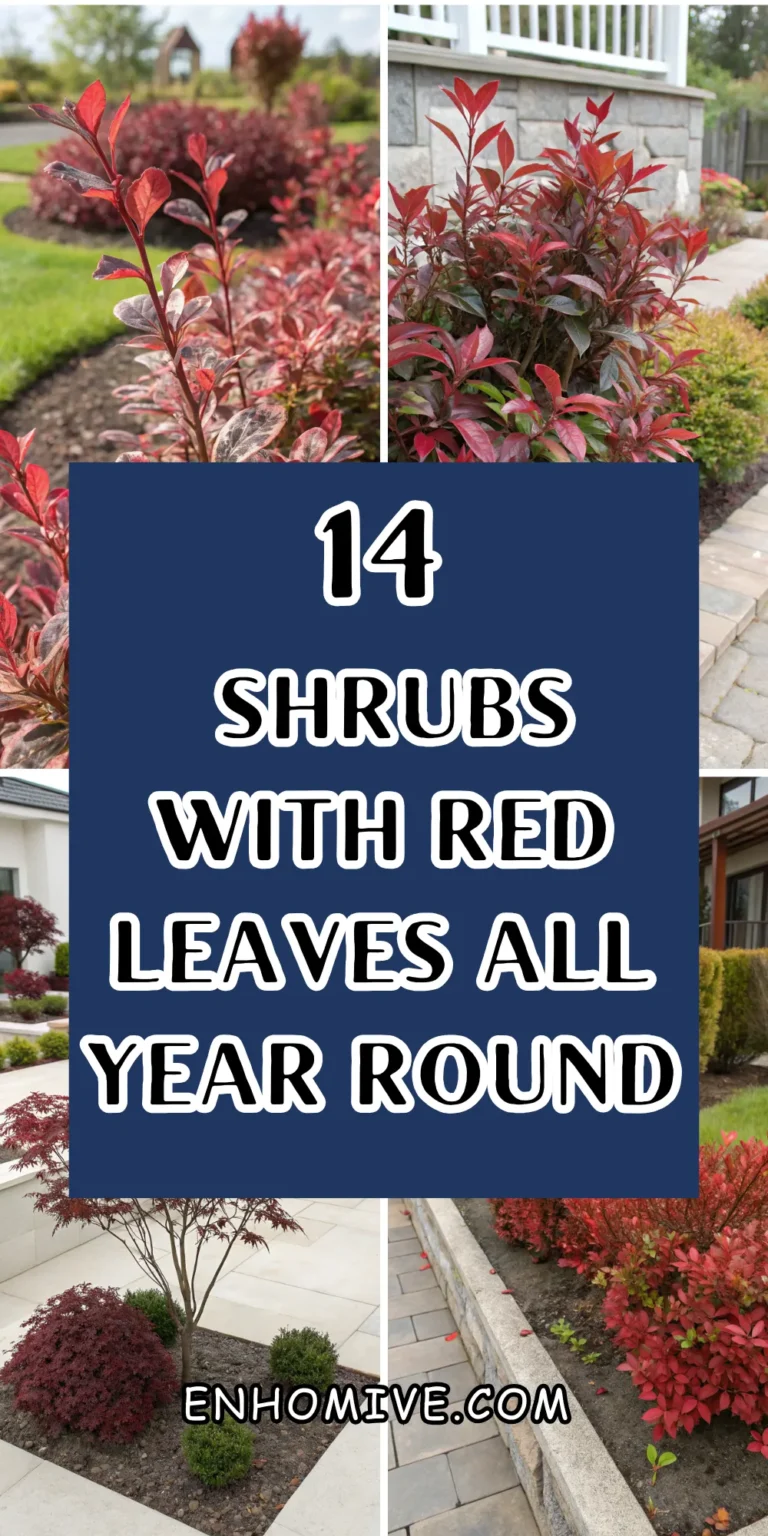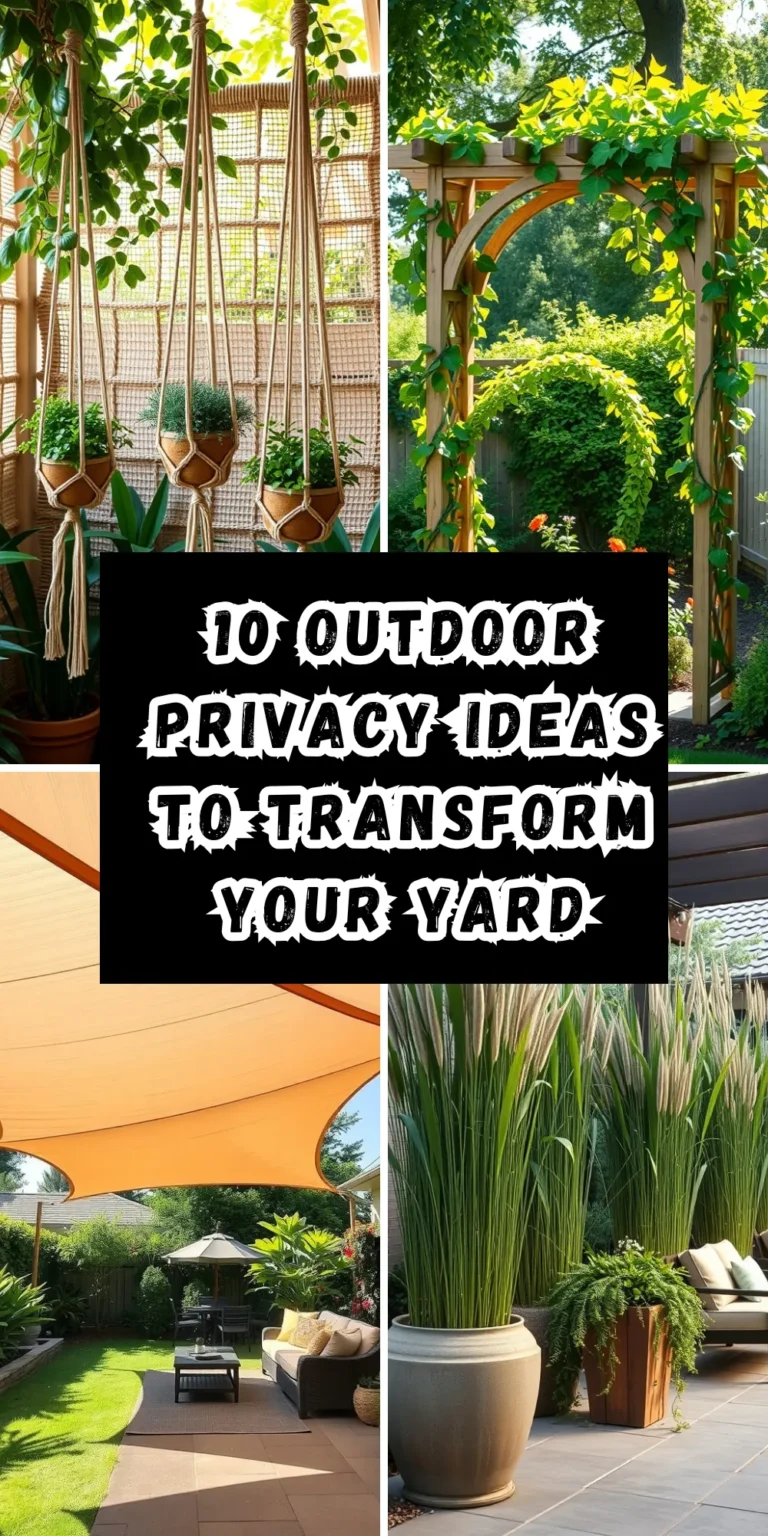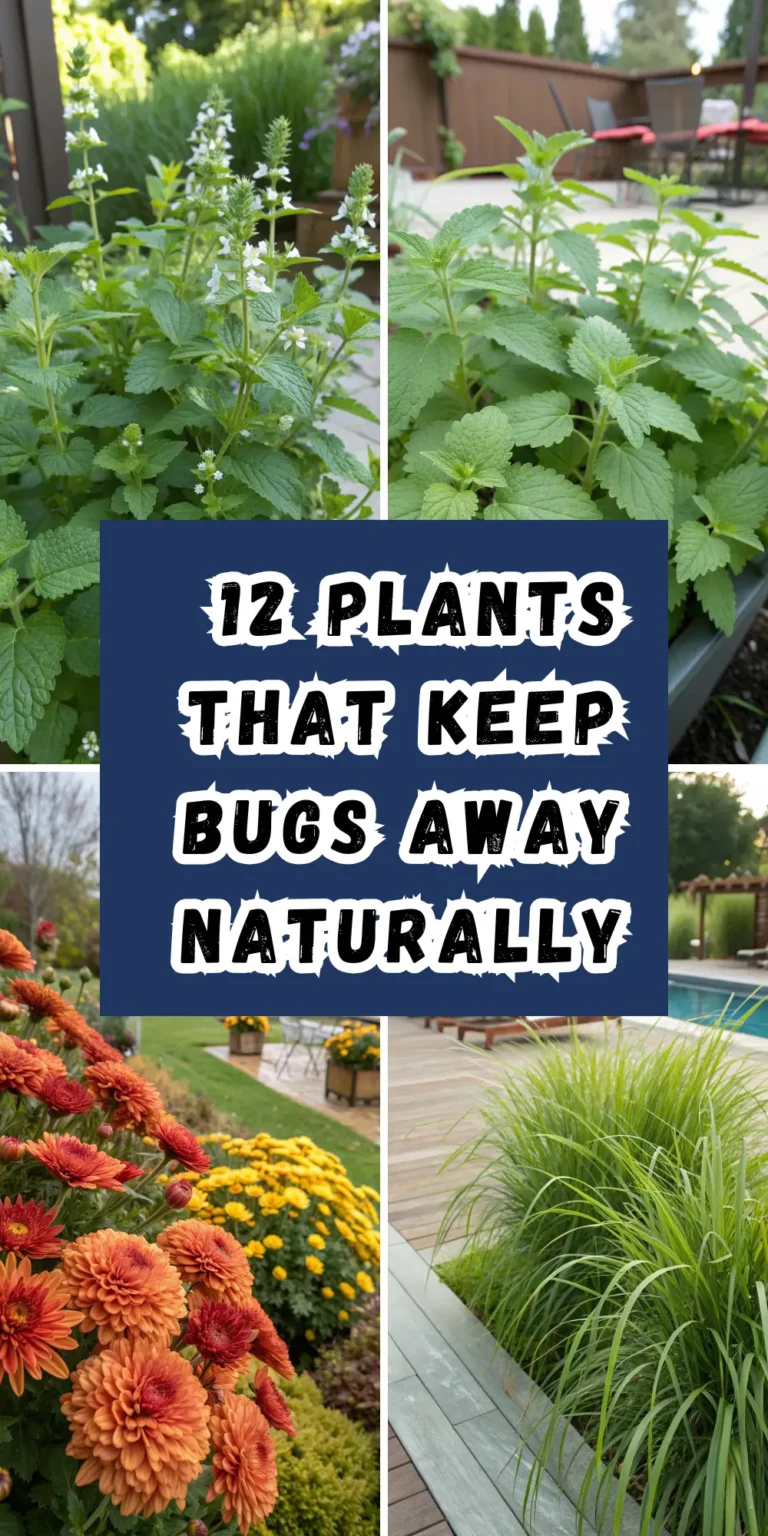16 Garden Fence Design Ideas
Garden fences serve far more purpose than simply marking property boundaries—they’re architectural elements that define outdoor spaces, create privacy, and provide the perfect backdrop for your landscape design. A thoughtfully chosen fence can transform an ordinary yard into a series of intimate garden rooms, each with its own character and purpose.
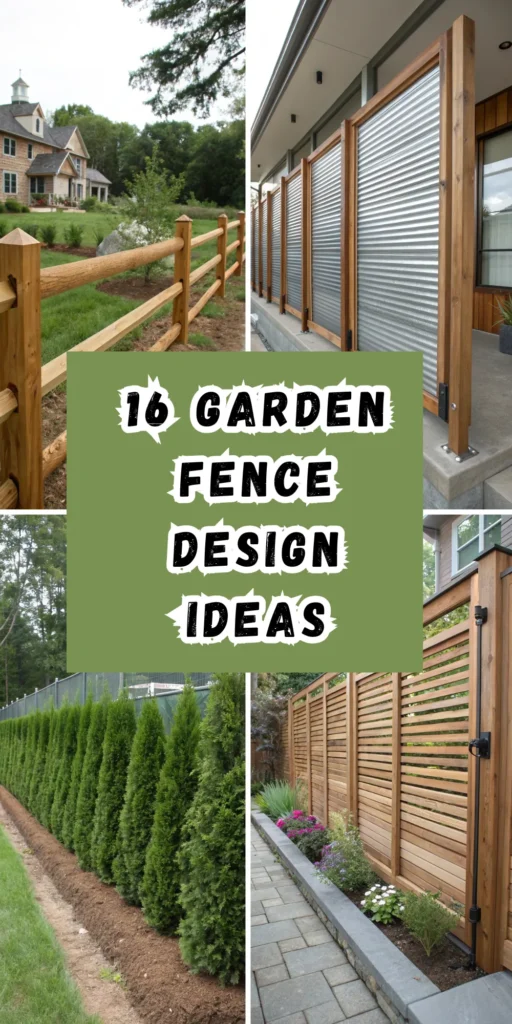
The right fence design bridges the gap between function and beauty, offering security and privacy while enhancing your garden’s overall aesthetic appeal. From rustic wooden pickets that complement cottage gardens to sleek metal panels that frame modern landscapes, your fence choice sets the tone for everything that grows within its bounds.
Classic White Picket Fence
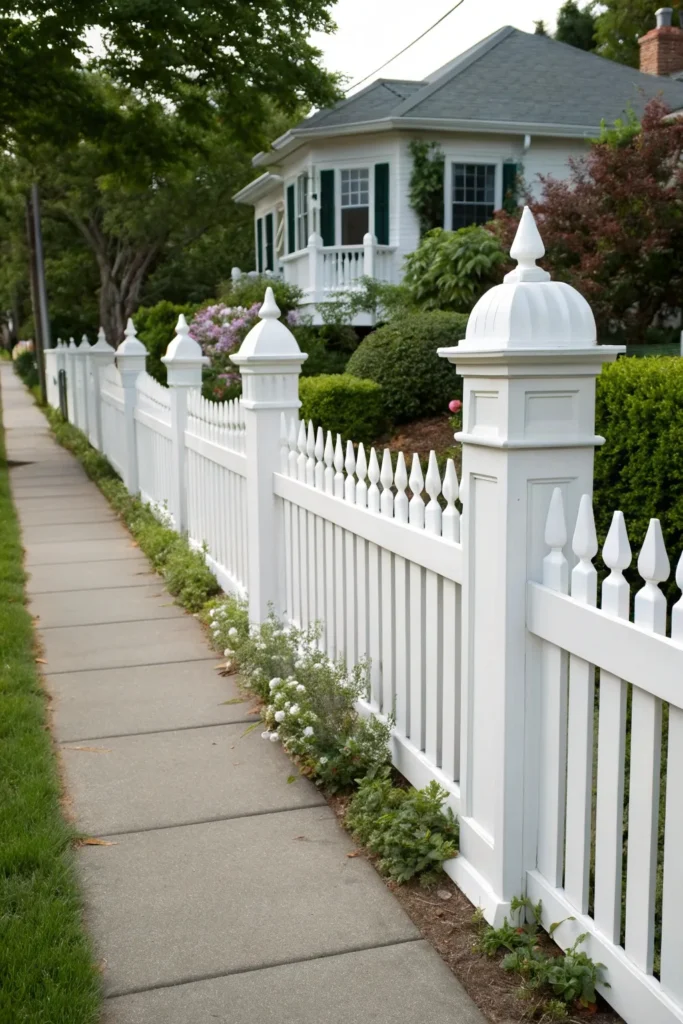
Why try this? Nothing captures timeless American garden charm like a well-crafted white picket fence with traditional styling.
Implementation: Install cedar or pine pickets with pointed or rounded tops, spaced evenly on horizontal rails. Paint with high-quality exterior white paint for classic appeal. Add decorative post caps and consider varying picket heights for visual interest.
Who benefits: Cottage garden enthusiasts and those wanting quintessential suburban charm with excellent curb appeal.
Pro tip: Use semi-gloss paint finish for easier cleaning and better weather resistance than flat paint.
Horizontal Slat Modern Fence

Create clean, contemporary lines with horizontal wood slats that emphasize width and create sophisticated privacy screening.
Implementation: Install horizontal cedar, ipe, or composite boards with consistent spacing between slats. Mount on sturdy vertical posts with hidden fasteners for seamless appearance. Consider alternating board widths for dynamic visual rhythm.
Best for: Modern homes and those preferring clean lines over traditional vertical fence patterns.
Con: Horizontal installation can be more complex and expensive than traditional vertical fencing methods.
Living Privacy Hedge Wall
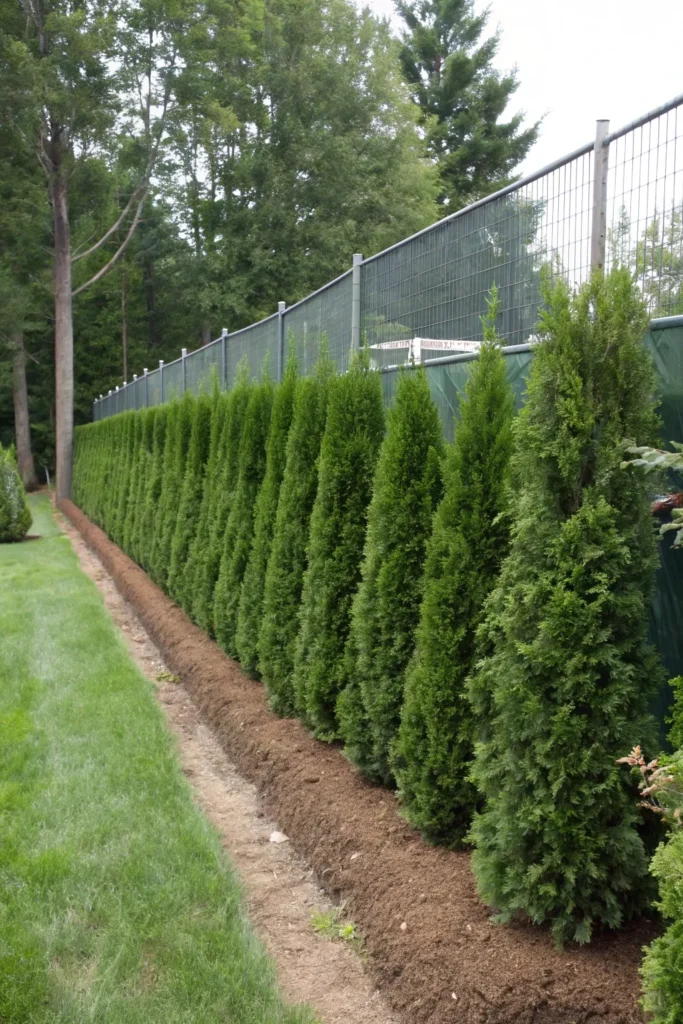
Why try this? Dense evergreen hedging provides natural privacy screening that improves with age and supports local wildlife.
Steps: Plant fast-growing evergreens like arborvitae, boxwood, or privet in straight lines with proper spacing for mature size. Install temporary fencing if immediate privacy is needed while plants establish. Regular pruning maintains desired height and density.
Why it works: Creates natural barriers that provide year-round screening while adding oxygen and habitat to your garden.
Styling tip: Mix different evergreen varieties for texture variation while maintaining consistent mature height.
Bamboo Screen Fencing
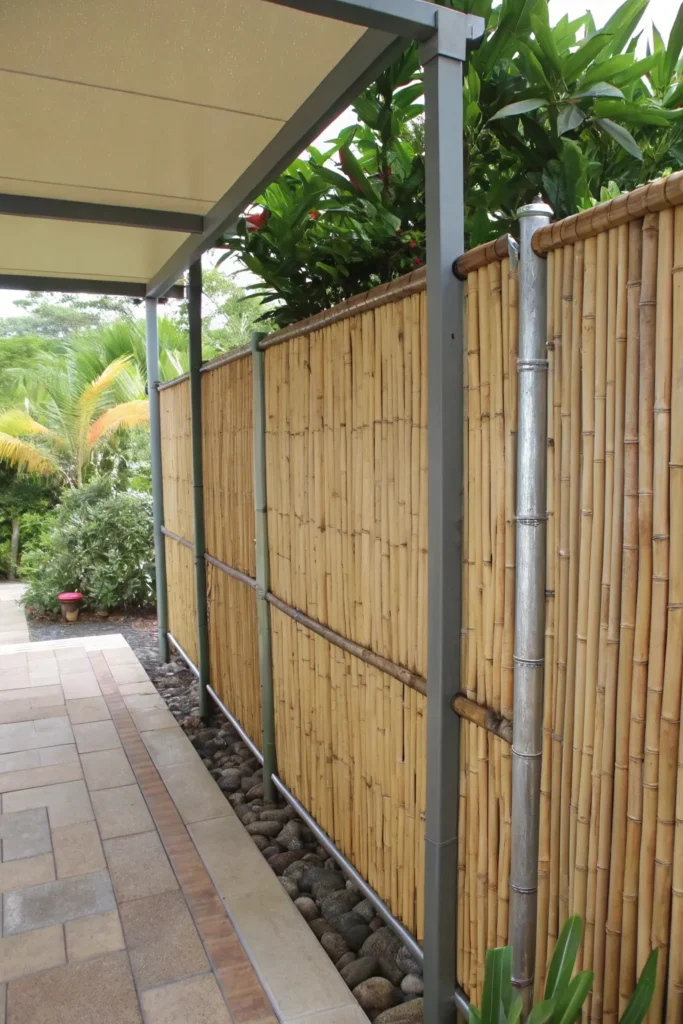
Add exotic, tropical atmosphere with sustainable bamboo fencing that filters light beautifully.
How to: Install bamboo panels or individual bamboo poles secured to metal or wood frame structure. Choose natural bamboo for rustic appeal or black bamboo for dramatic contrast. Seal bamboo regularly to prevent weather damage and insect infiltration.
Why it matters: Provides a quick-growing, sustainable privacy solution with unique texture and sound-filtering properties.
Pro tip: Ensure proper drainage around bamboo posts to prevent rot and extend fence lifespan significantly.
Wrought Iron with Climbing Vines
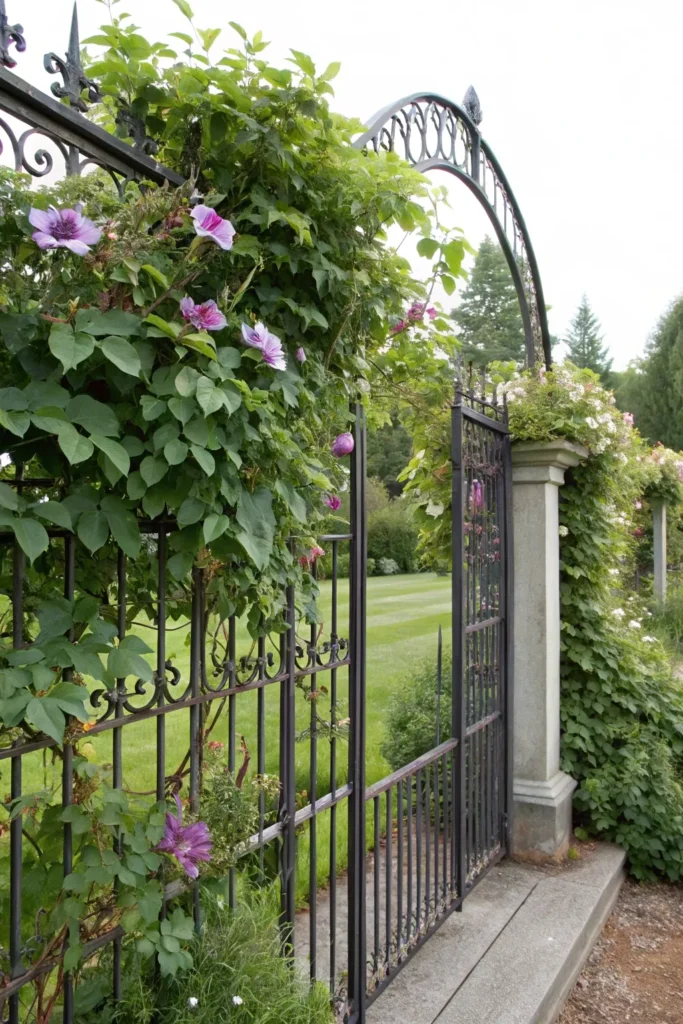
Combine elegant metal framework with lush climbing plants for privacy that evolves through growing seasons.
Implementation: Install decorative wrought iron or aluminum fencing with climbing supports. Plant vigorous vines like clematis, climbing roses, or ivy at fence base. Choose deciduous vines for seasonal interest or evergreen varieties for year-round coverage.
Who benefits: Those wanting elegant structure that becomes more beautiful and private over time.
Downside: Requires ongoing vine maintenance and pruning to prevent overwhelming the metal framework.
Reclaimed Wood Rustic Fence
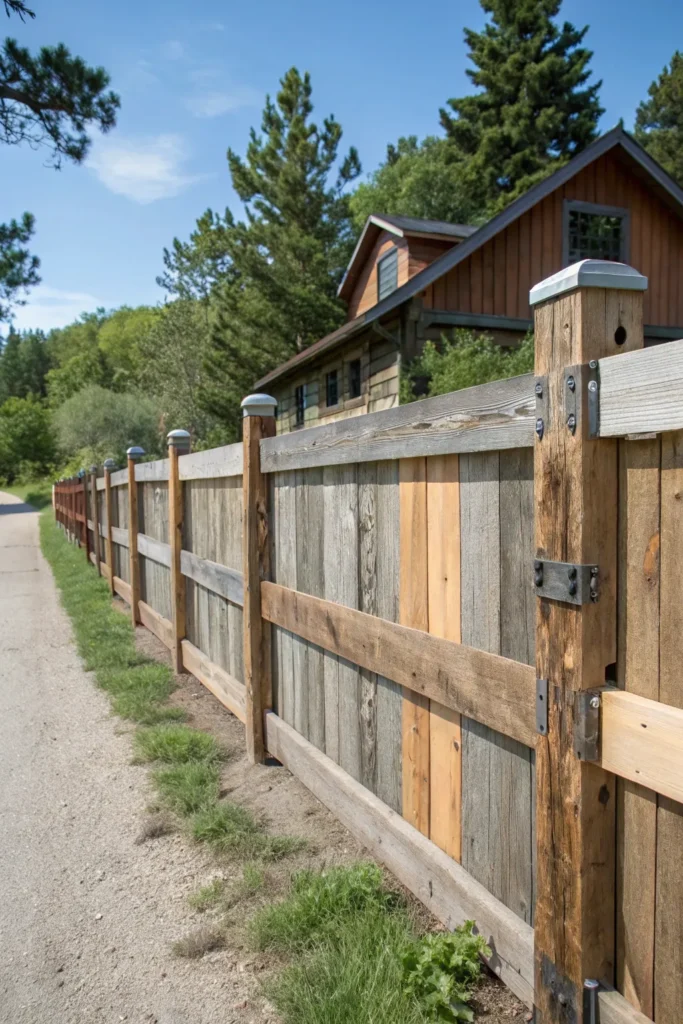
Why try this? Weathered barn wood and salvaged lumber create authentic rustic character while supporting sustainable building practices.
How-to: Source reclaimed wood from architectural salvage or old barns, ensuring proper treatment for outdoor use. Mix board widths and weathered textures for authentic appearance. Install with galvanized hardware to prevent rust staining.
Best for: Country properties and those appreciating authentic aged materials with environmental consciousness.
Con: Reclaimed materials can be expensive and may require extensive preparation for outdoor installation.
Lattice Panel Privacy Screen
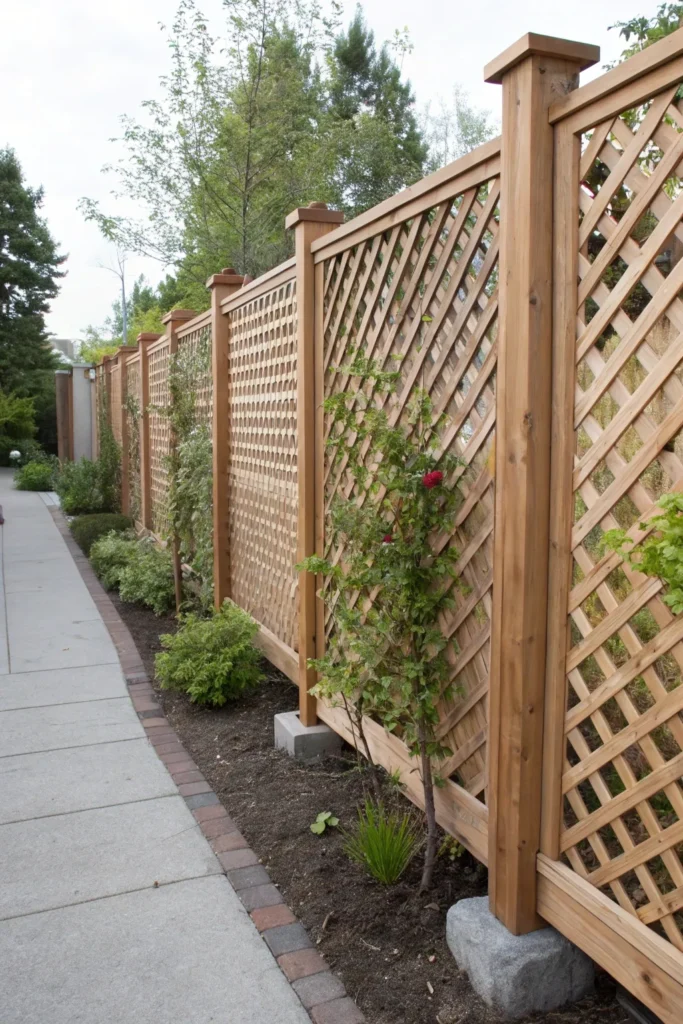
Create partial privacy with a decorative lattice that supports climbing plants while maintaining airflow.
Steps: Install cedar or vinyl lattice panels in frames between fence posts. Use diagonal or square grid patterns based on desired aesthetic. Plant climbing vines or hang planters for additional screening and garden interest.
Why it’s helpful: Provides privacy without creating a solid barrier, maintaining garden connection while defining spaces.
Pro tip: Angle lattice panels slightly outward at top for better vine support and more interesting shadow patterns.
Stone and Wood Combination
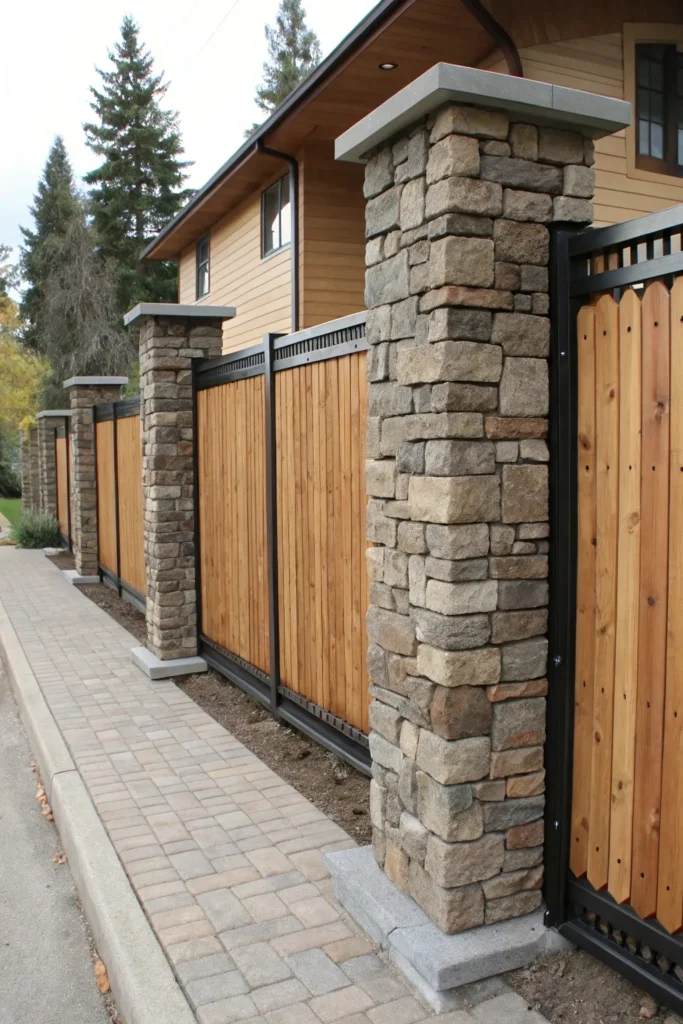
Blend natural stone pillars with wood panels for substantial, permanent fencing with varied texture and visual weight.
Benefits: Stone pillars provide long-lasting structural support and upscale appearance. Wood panels between stones offer privacy and warmth. Combination works well with various architectural styles from rustic to contemporary.
Steps: Build stone or concrete pillar foundations with proper footings. Install wood panels, metal inserts, or glass between pillars. Choose materials that complement home exterior and existing landscape elements.
Best for: Upscale properties and those wanting permanent, low-maintenance fencing with natural materials.
Styling tip: Match stone type and wood species to existing landscape materials for cohesive design integration.
Gabion Wall Fence
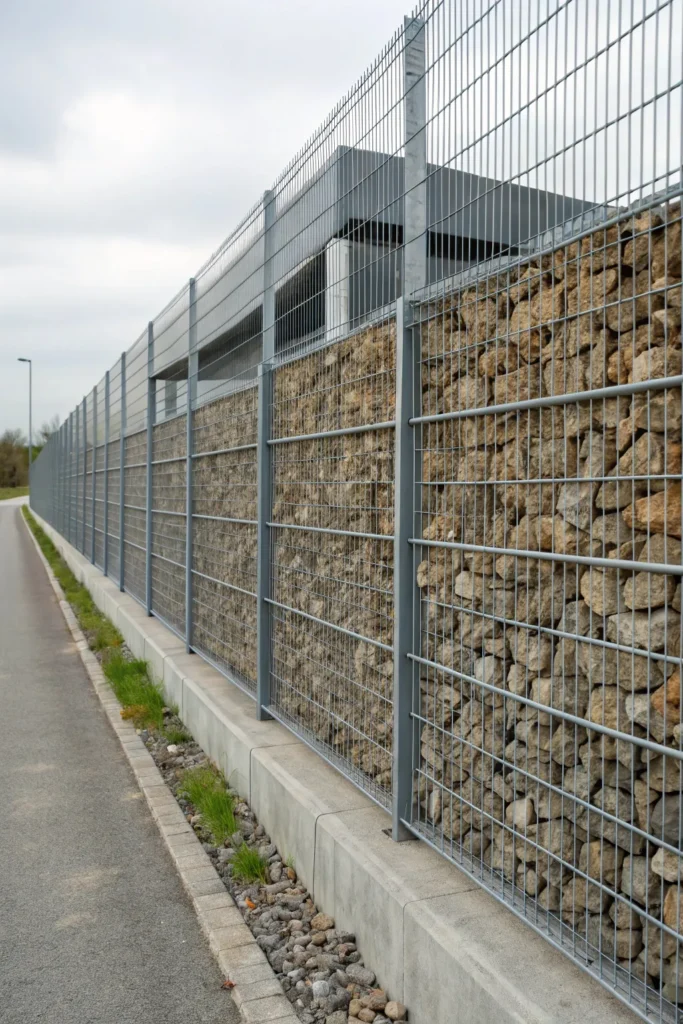
Install modern industrial-style fencing using wire cages filled with stone for dramatic contemporary privacy screening.
Implementation: Construct galvanized wire baskets in desired fence height and fill with uniform stones or mixed aggregate. Ensure proper foundation and drainage for stability. Consider integrated planters for softening harsh industrial appearance.
Who it’s for: Modern properties and those appreciating industrial design aesthetic with exceptional durability.
Con: Requires heavy equipment for installation and may not suit traditional architectural styles.
Split Rail Country Fence
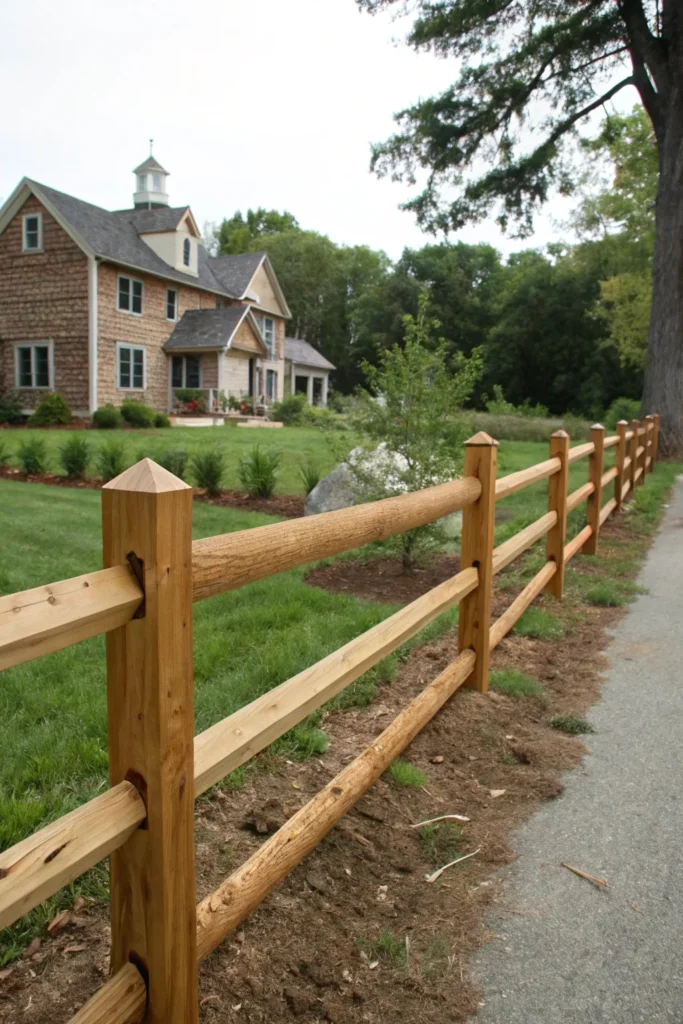
Create authentic rural boundaries with traditional split rail fencing perfect for large properties and casual garden definition.
How to: Install cedar or locust split rails in traditional two or three-rail configuration. Use mortise and tenon joinery for authentic appearance or modern brackets for easier installation. Leave natural or apply clear protective finish.
Why it matters: Provides property definition without blocking views, perfect for large lots and rural settings.
Downside: Offers minimal privacy and security—primarily decorative and boundary-marking rather than screening.
Corrugated Metal Modern Screen
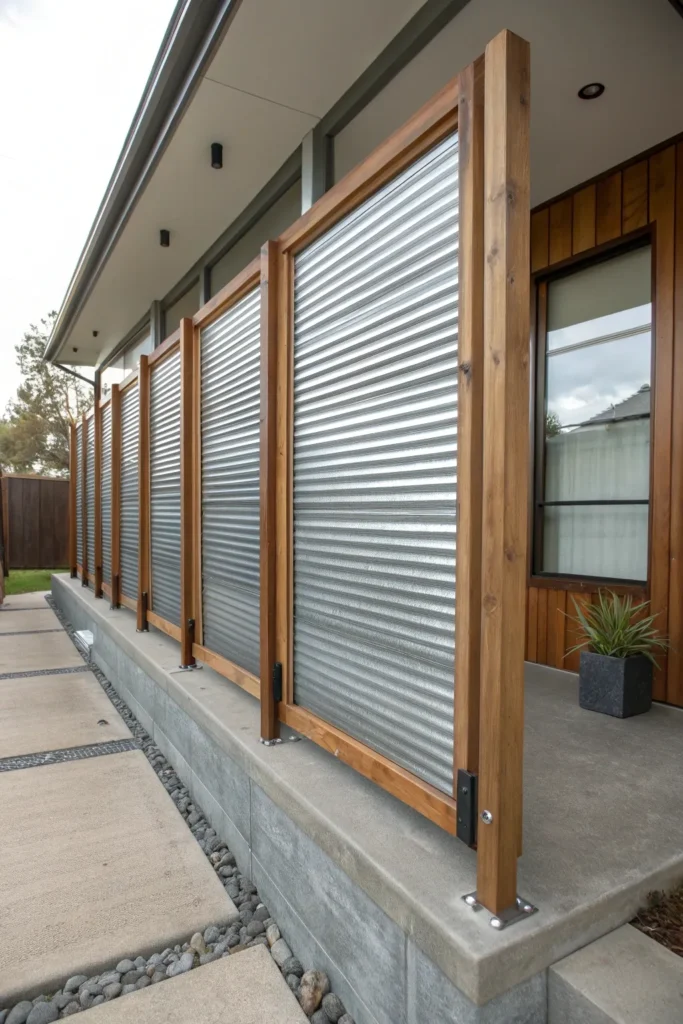
Add industrial chic with corrugated metal panels that provide privacy while creating interesting light and shadow effects.
How-to: Install corrugated steel or aluminum panels in wood or metal frames. Choose galvanized finish for longevity or powder-coated colors for customization. Ensure proper ventilation to prevent heat buildup behind panels.
Best for: Contemporary homes and those wanting low-maintenance screening with modern industrial appeal.
Pro tip: Install with slight gaps at bottom for drainage and air circulation to prevent moisture problems.
Trellis Garden Fence
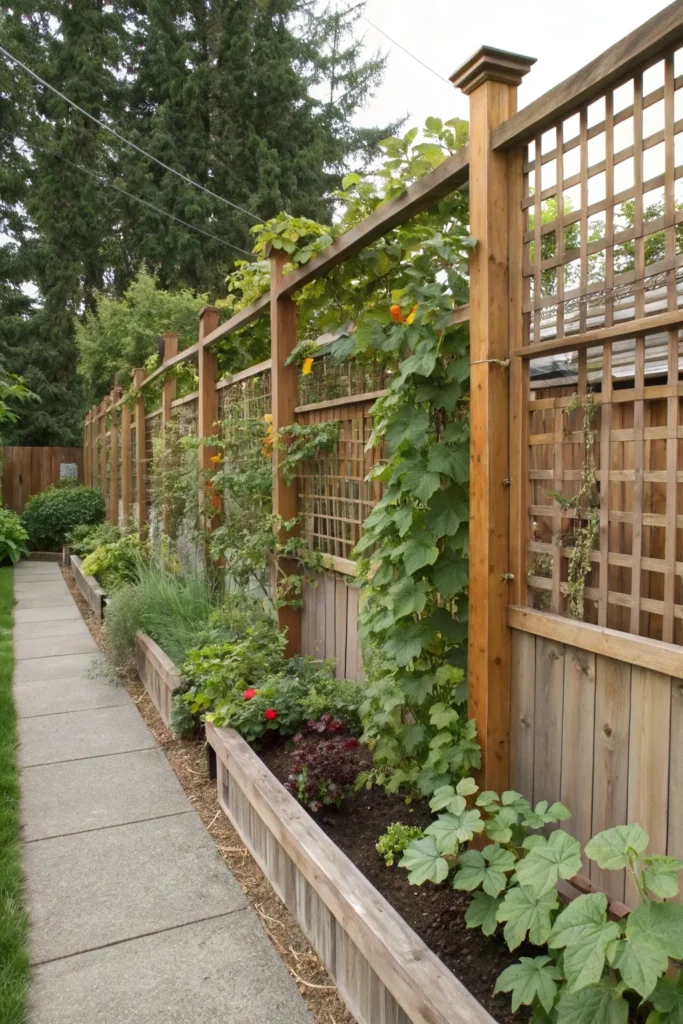
Transform functional fencing into productive garden space with integrated trellis systems supporting edible and ornamental climbing plants.
Implementation: Build or install fence with built-in trellis sections, arbors, or climbing supports. Plant productive vines like grapes, hops, or climbing vegetables alongside ornamental flowering climbers. Include integrated irrigation for plant health.
Why it’s great: Maximizes garden productivity while creating beautiful, functional boundaries that change with seasons.
Drawback: Requires ongoing plant care and may create maintenance access challenges for fence repairs.
Louvered Privacy Fence
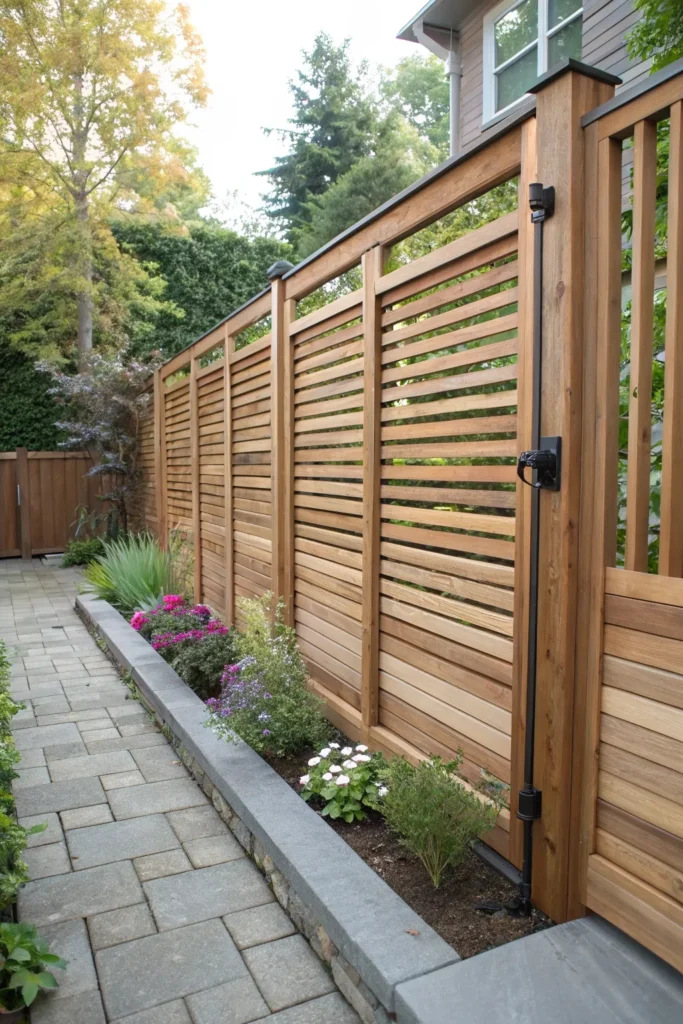
Install adjustable or fixed louvers that provide privacy while maintaining airflow and filtered light passage.
Steps: Construct fence with angled slats that block direct sight lines while allowing air circulation. Use cedar, composite, or aluminum materials based on budget and maintenance preferences. Consider adjustable louvers for seasonal privacy control.
Who benefits: Those needing privacy without creating dead air spaces or completely blocking garden breezes.
Con: More complex construction than traditional fencing and higher material costs for quality louver hardware.
Mixed Material Eclectic Fence
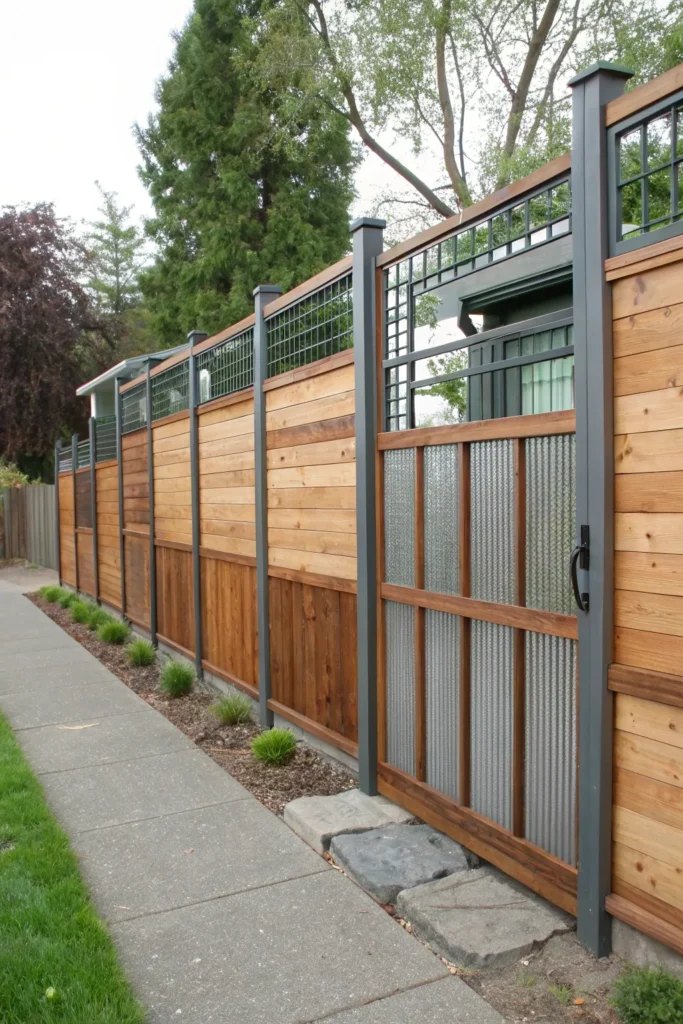
Create unique garden boundaries by combining different materials, textures, and heights for personalized artistic expression.
How-to: Mix wood panels with metal sections, incorporate glass or acrylic inserts, or combine solid areas with open sections. Use a consistent color palette or structural elements to maintain cohesion despite varied materials.
Why it works: Allows creative expression while addressing different functional needs along property lines.
Pro tip: Plan material transitions carefully to avoid chaotic appearance—use repeating elements for visual unity.
Deer-Proof Garden Enclosure
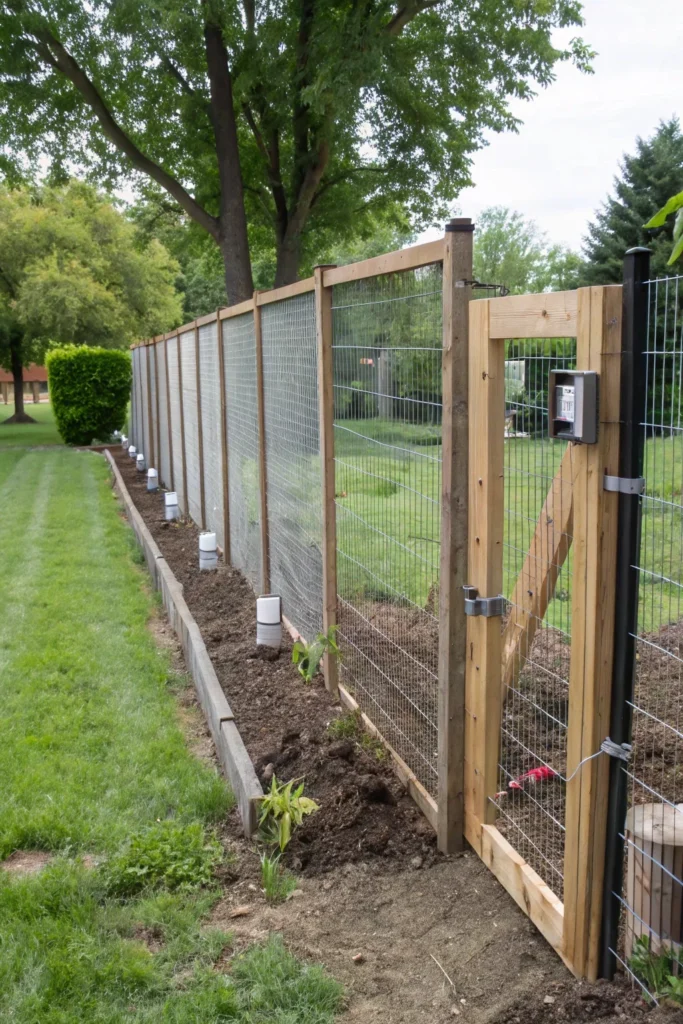
Protect valuable plantings with tall, sturdy fencing designed specifically to exclude deer and other garden pests.
Implementation: Install 8-foot minimum height fencing with small mesh openings or solid panels. Bury fencing 6 inches deep to prevent digging underneath. Include gates with secure latching mechanisms and consider electric wire additions for problem areas.
Best for: Rural and suburban areas with significant deer pressure threatening garden investments.
Downside: Height requirements can create fortress-like appearance and may require permits in some communities.
Glass Panel Contemporary Fence

Achieve maximum privacy with minimal visual obstruction using tempered glass panels in modern metal frameworks.
How-to: Install tempered safety glass panels in aluminum or steel frames with proper drainage and ventilation. Choose clear glass for views, frosted for privacy, or tinted for sun control. Ensure professional installation for safety and warranty coverage.
Why it matters: Provides complete privacy and wind protection while maintaining an open, spacious garden feeling.
Con: Higher cost than traditional materials and requires regular cleaning to maintain pristine appearance.
Garden fences are investments that define your outdoor living spaces for years to come, making thoughtful design choices crucial for long-term satisfaction. The best fence designs balance practical needs like privacy and security with aesthetic goals that enhance your property’s overall appeal and complement your garden’s style.
Remember that your fence will serve as the backbone for future landscaping decisions, so consider how different plants, lighting, and seasonal changes will interact with your chosen design. Whether you prefer the timeless charm of white pickets or the sleek sophistication of glass panels, the right fence creates the perfect framework for your garden to flourish while reflecting your personal style and meeting your family’s practical needs.

